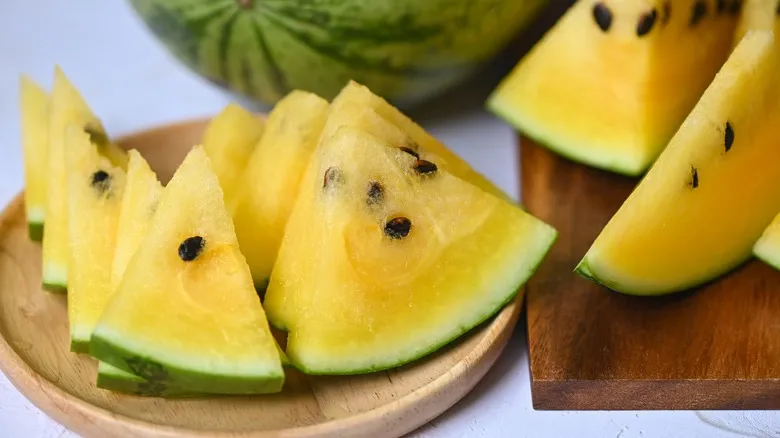Where to find yellow watermelon
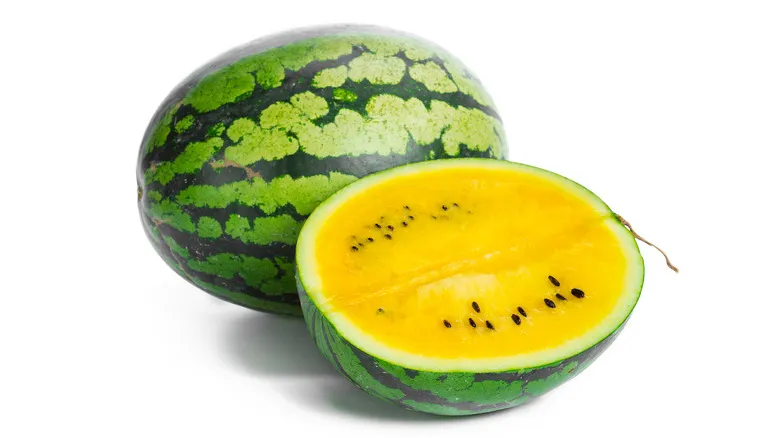
If red and yellow watermelons are fundamentally similar, you might wonder why they come in different colors. The reason lies in the yellow variety, which is derived from a different seed that lacks lycopene but has higher levels of beta carotene. Lycopene is a natural pigment found in various fruits and vegetables, most notably tomatoes; it’s what gives ketchup its red color and causes tomato sauce to stain plastic containers. This pigment is also responsible for the pinkish-red shade of watermelon, and when watermelon lacks lycopene, its flesh turns yellow.
Yellow watermelon has its origins in Africa, first appearing around 5,000 years ago, and it is not as commonly found as red watermelon. Specialty grocery stores with extensive produce sections are more likely to stock this fruit, and even Trader Joe's often carries it during the summer months when it is in peak season. You may need to inquire, but you should be able to find it across the United States. To select the best watermelon, you can use the same method for yellow as you would for red watermelons: look for its "field spot," or yellow belly, which is the discolored area of the melon that rested on the ground while growing. A large, yellow spot indicates ripeness, while a small, white spot suggests the melon is under ripe and may not taste as good.
How to choose a yellow watermelon
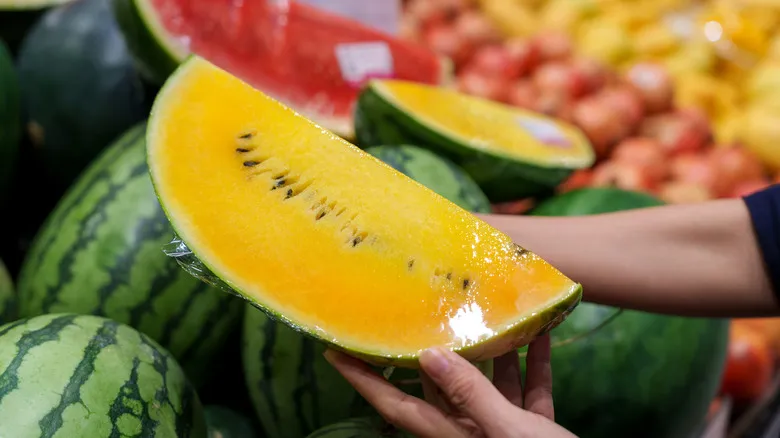
In the realm of yellow watermelons, there are five distinct varieties, each with its own unique characteristics, so you may find yourself favoring one over the others. The yellow crimson variety closely resembles the traditional red watermelon you know, but it offers a touch more sweetness. If you're looking for a vibrant yellow melon—perhaps the ideal choice for food photography—consider the desert king variety, which boasts higher beta carotene levels than the others.
The buttercup yellow melon is a seedless option that surpasses typical yellow varieties in sweetness. If this is your first experience with a yellow melon, you might forever associate its flavor with that of a lollipop. Conversely, the yellow black diamond watermelon presents a much subtler sweetness compared to the buttercup. For those seeking a smaller watermelon—one that you could easily enjoy on your own—try the yellow doll, which weighs around five to six pounds but is just as juicy and delightful.
Recommended
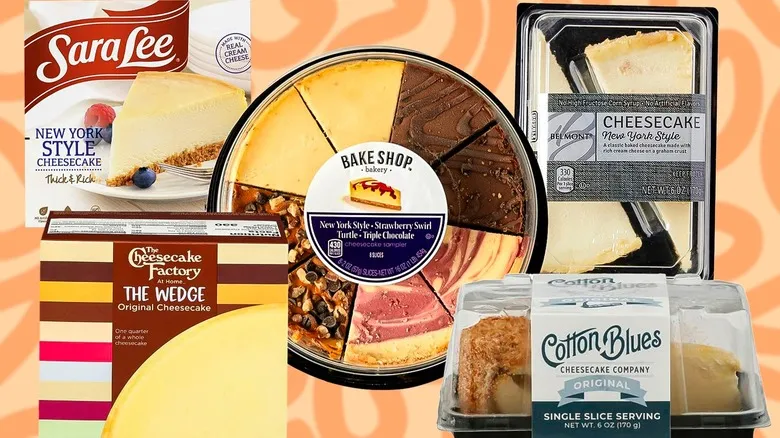
Store-Bought Cheesecakes Ranked From Worst To Best

Here's Where You Can Find The Smallest And Largest Costco In The US

The Eco-Friendly Labels To Look For When Buying Canned Tuna
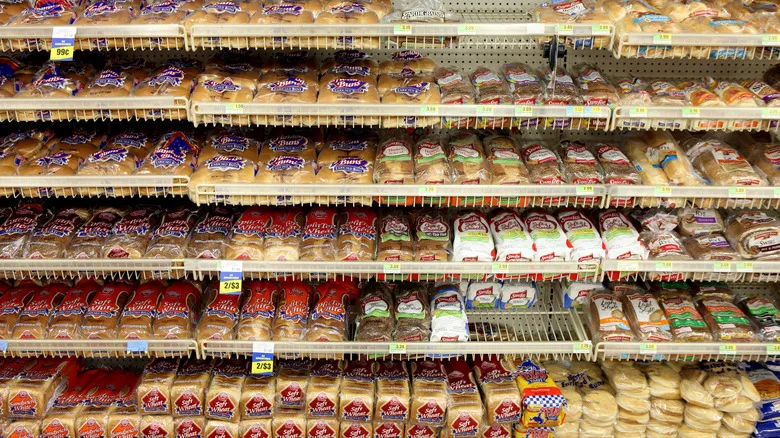
The One Time Supermarket Bread Is Superior To The Artisanal Stuff
Next up

